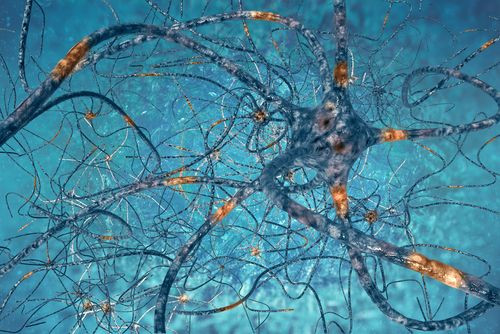Birth Order Of Neurons May Be Key To Understanding How Your Brain Wires Itself During Earliest Development

Did you know your brain begins with just one neuron that divides again and again, creating during your earliest development up to 250,000 new neurons per minute? By the time you reach maturity, your brain has billions of these precisely "wired" nerve cells — but how does each cell know which connections to make? Neurons are guided by a simple but elegant birth order rule that allows them to find and form their proper connections, according to new research conducted on mice at UC San Diego School of Medicine. "Nothing about brain wiring is haphazard," said Dr. Andrew Huberman, assistant professor in the Department of Neurosciences and senior author of the study.
Target Selection, as Practiced by Neurons
Neurons, the cells within your nervous system, are special cells with many special features. They have dendrites, which bring electrical signals to the cell body, and axons, which take information away from the body. Neurons also contain distinctive structures, synapses, and unique chemicals, neurotransmitters. All of these features allow neurons to communicate among themselves by firing electrochemical signals to connected cells. This method of communication means brain wiring is crucial to a properly functioning brain. Scientists refer to the process by which neurons decide to connect to other neurons as target selection.
Past studies have shown how the brains of people with autism and other developmental disorders are wired differently than the brains of people who develop typically. Because of this, many researchers believe the cause of this may begin with target selection. To better understand how young brains get wired, UC San Diego researchers focused on mice and in particular the development of retinal ganglion cells (RGCs) — cells connecting the eyes and brain. For the study, the researchers tagged the RGCs and then watched what happened during development. Soon enough they saw how some types of RGCs (such as those that detect brightness and control pupil constriction) are created early in development, while others (such as those controling eye movements) are created later.
Yet, this was not their only observation. The researchers also discovered the RGCs created earliest not only make a lot of connections to other neurons but they also make a lot of mistakes. At the same time, these early RGCs corrected their mistakes by simply repositioning or removing their axons. By contrast, the RGCs created later in development were highly accurate in their target selection skills and made almost no errors.
"The neurons are paying attention to when they were born and reading out which choices they should make based on their birthdate," says Dr. Jessica Osterhout, the study's lead author. "It seems to all boil down to birthdate."
In fact, the importance of timing is a classic principle of developmental biology — and, most of us would say, life — nevertheless, this study is among the first to show how the timing of each neuron’s birth is linked to how each achieves its specific brain wiring objective. Next, the research team plans to examine whether wiring mishaps in models of autism and schizophrenia and congenital blindness may be in some way time-dependent. "We want to know if in diseases such as autism neurons are made out of order and as a result get confused about which connections to make," says Huberman.
Source: Huberman A, Osterhout J, Nguyen P, El-Danag R. Birthdate and outgrowth timing predict cellular mechanisms of axon target matching in the developing visual pathway. Cell Reports. 2014.



























